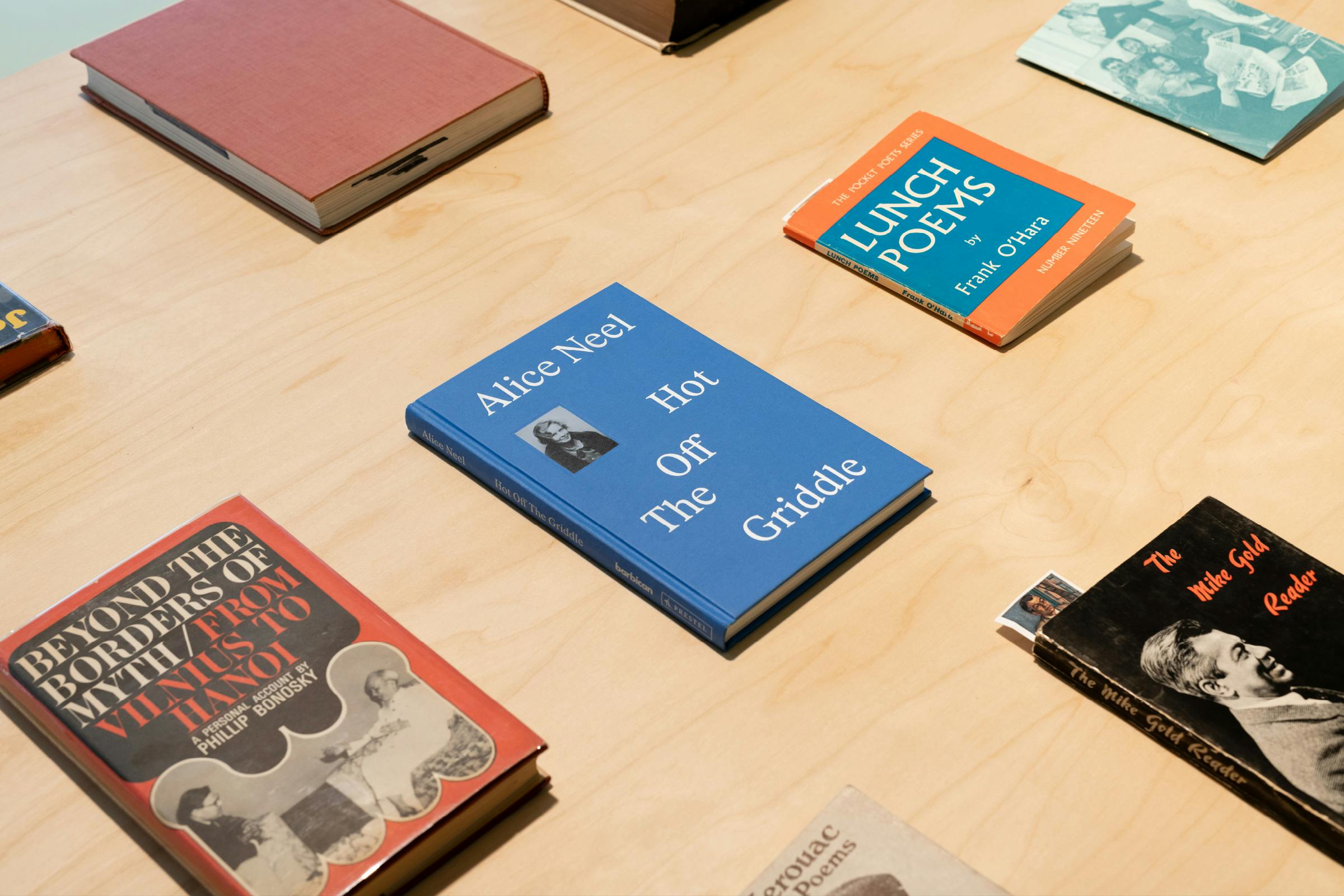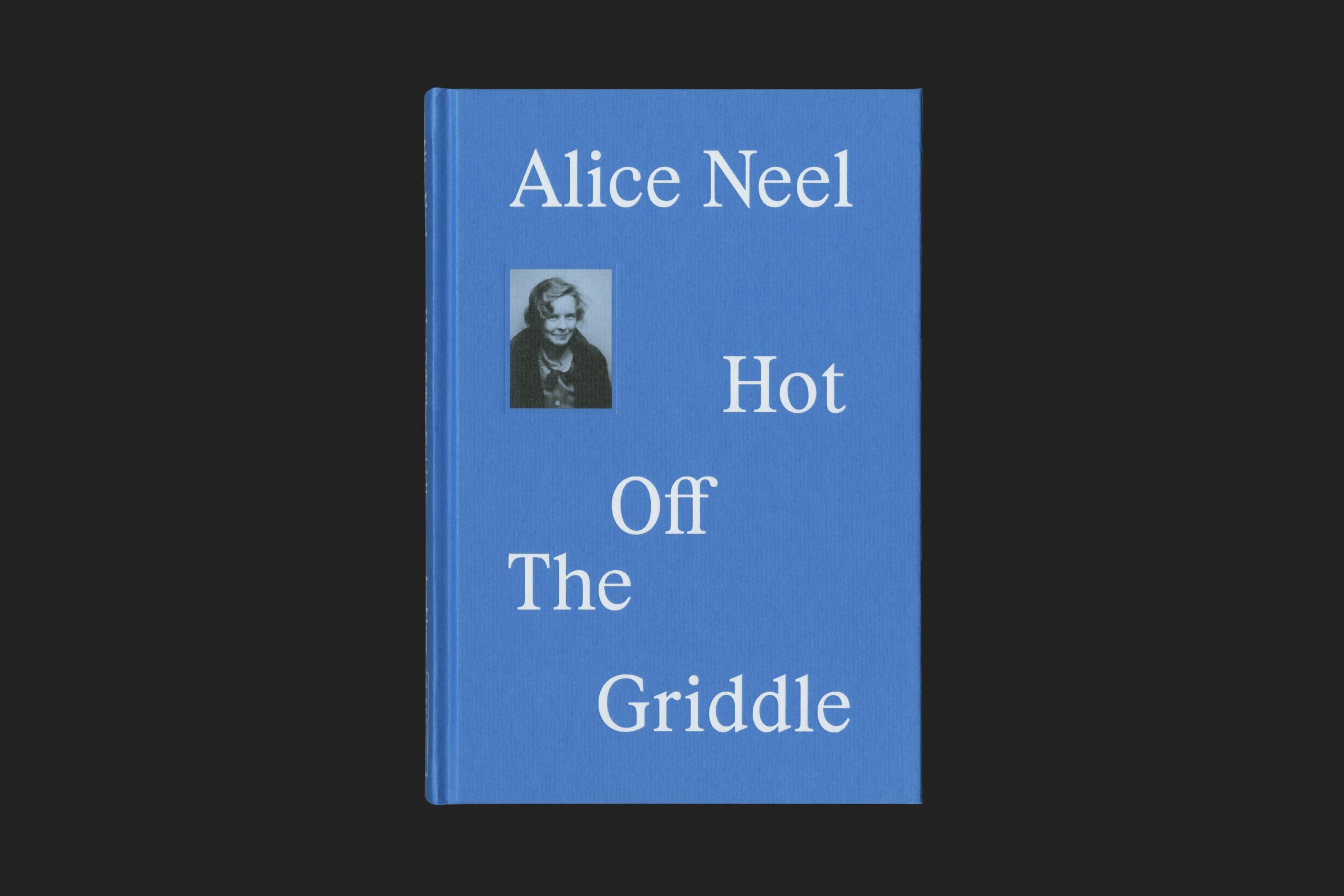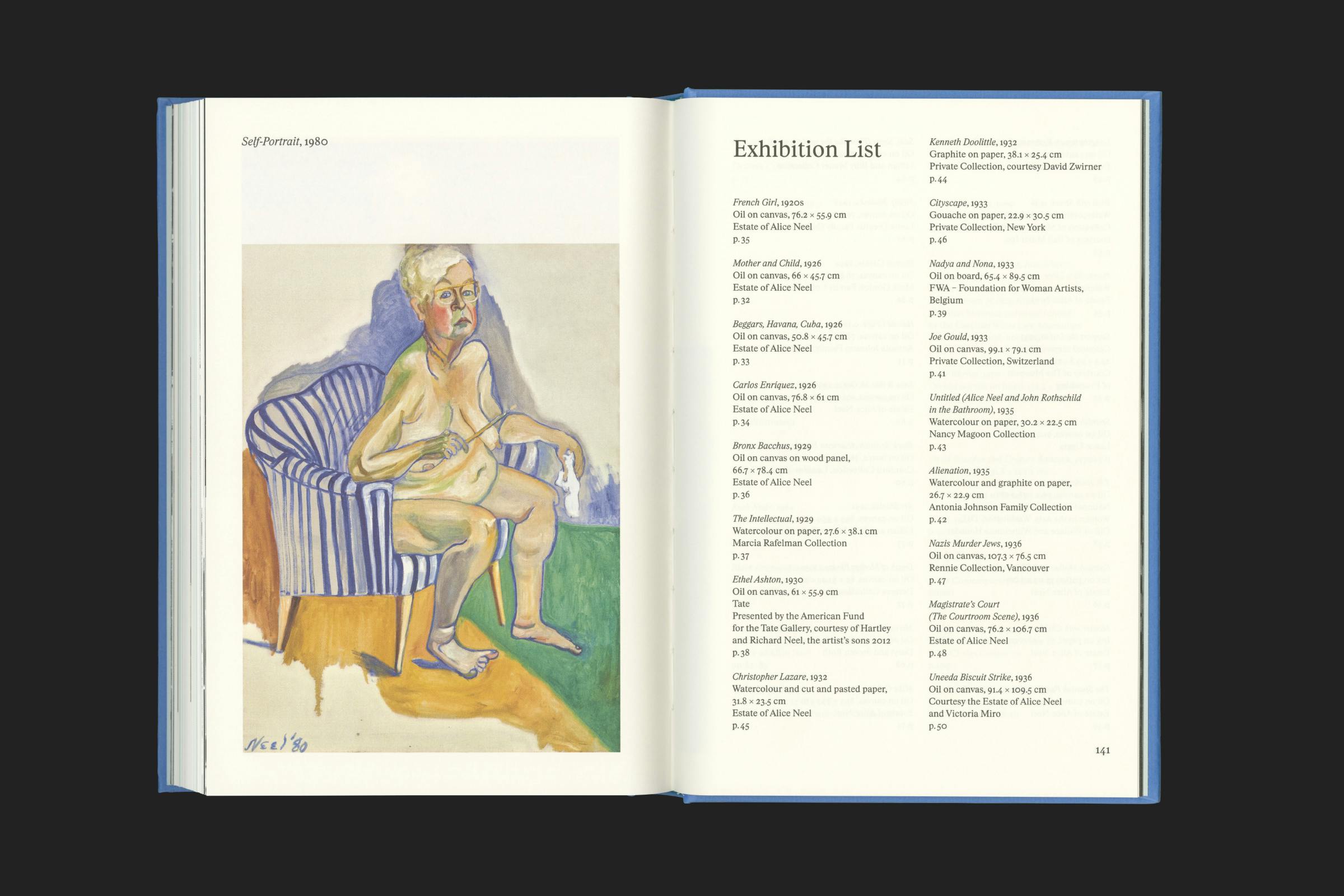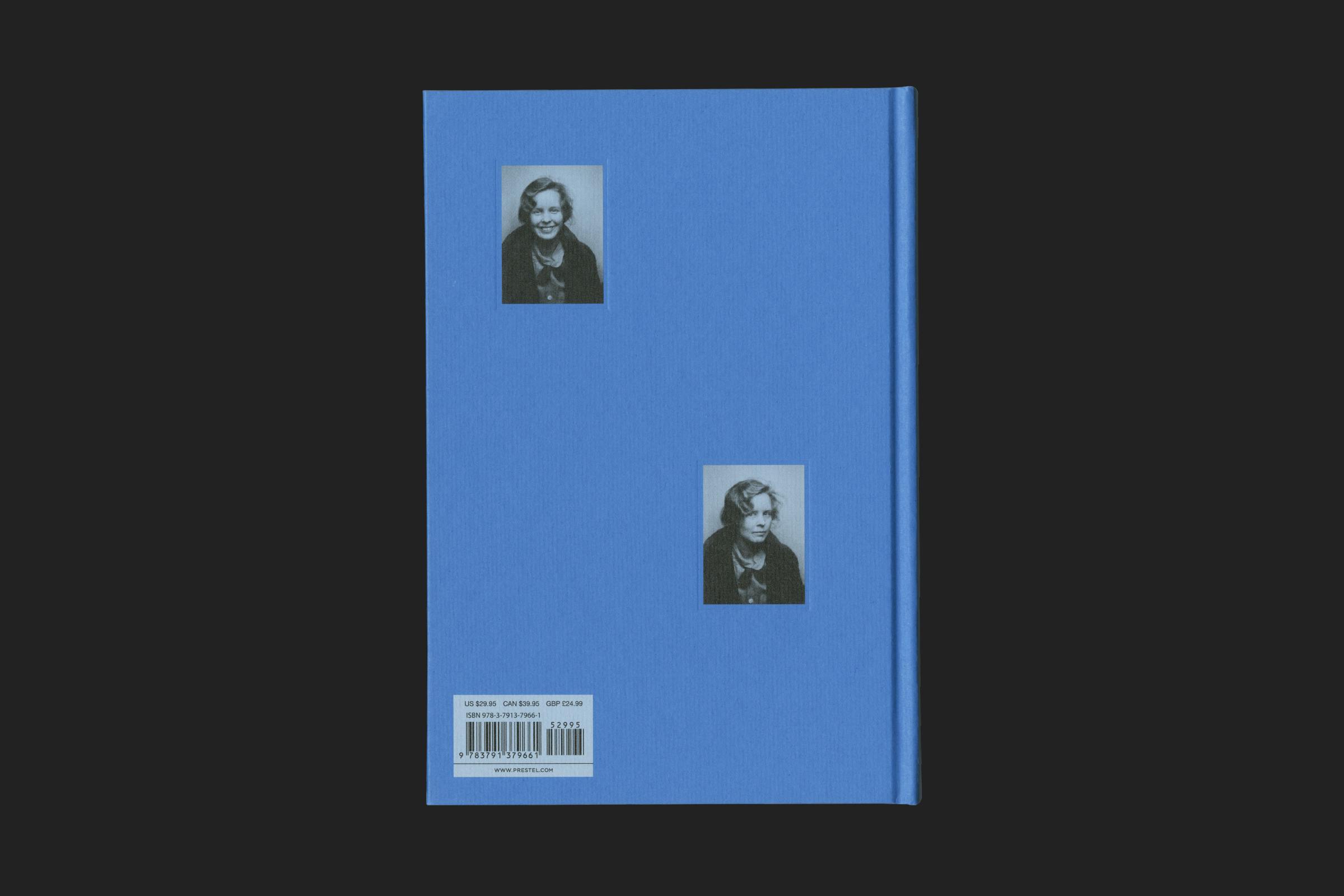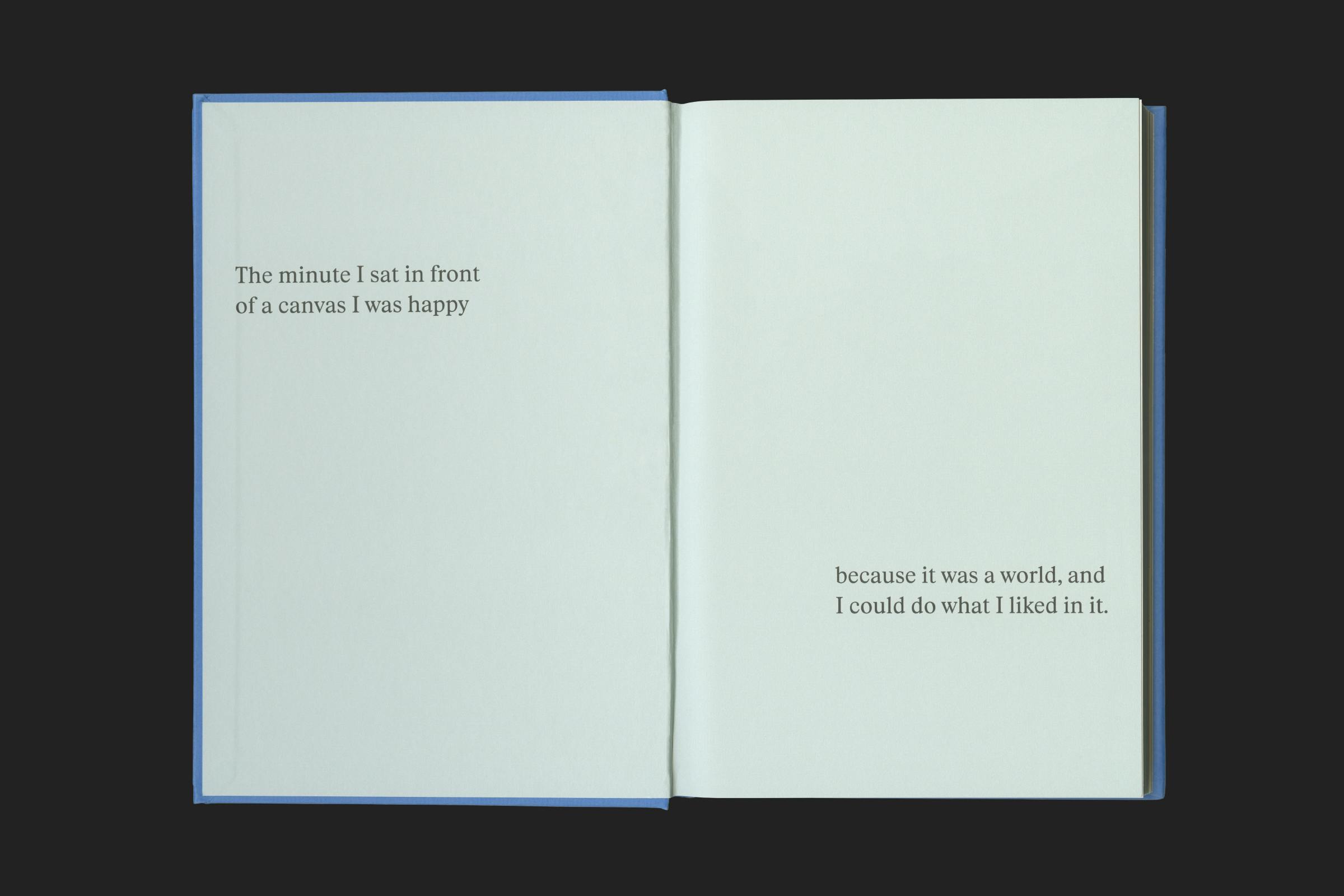
Alice Neel: Hot Off The Griddle
Alice Neel was one of the great American painters of the twentieth century and a pioneer among women artists. A painter of people, Neel didn’t care about being fashionable or in step with avant-garde movements: ‘One of the reasons I painted was to catch life as it goes by,’ she explained, ‘right hot off the griddle.’
Alice Neel: Hot Off The Griddle accompanies the Barbican exhibition of the same title, taking a unique approach for an exhibition catalogue by highlighting Neel’s understanding of the fundamentally political nature of how we look at others and what it means to feel seen.
Client
Barbican
Category
Publisher
Barbican, Prestel
Editor
Eleanor Nairne
Texts
Hilton Als, Eleanor Nairne, Andrew de Brún
Poetry
Daisy LaFarge
The book starts and ends with a run of documents and photography of Neel from throughout her life, portraying her character ahead of her work. From photographs of her time in Cuba and Harlem, through to FBI investigation documents* and imagery of Neel reading the newspaper in her living-room, surrounded by her work.
Neel never had a separate studio space, always working from her home. At odds with the expected large-sized exhibition catalogue, this publication has been designed to be more considered. The format is reminiscent of a story-book – small in stature with a rounded spine and warm paper tone. Able to be carried around and read.
The vibrant blue of the cover and the laid texture of the paper nods to the infamous striped chair that Neel regularly used in her sittings, debossed with three true-to-size photographs of the artist showing her characteristic playfulness.
The plates inside are laid out chronologically, placing artworks in staggered layouts to create interaction between the images – leaving plenty of space to give the works a sense of impact. Occasionally breaking the flow of imagery with large-sized quotations and texts.
Format
150 × 220 mm
Extent
152pp
Cover
Hardback
Binding
Section sewn
Finishing
Foil, Debossing
Typeface
Rhymes Text
Text is set in Rhymes by Maxitype, a contemporary re-examination of the ubiquitous ‘Times’ style that was originally created as a modern update to classical forms – much as Neel was approaching portraiture, a painting style often seen as outdated during her lifetime. It is a type style with a strong sense of openness for legibility, but not without its own stylistic flair. Rhymes updates this for modern media, feeling both new and nostalgic at the same time.
Quotations and titles utilise an alternate set of narrow capital characters, creating a slight sense of unease and distorted proportions when blown up to larger sizes, especially within the exhibition space. Underlines also feature prominently throughout the text to highlight key turns of phrase, reminiscent of signs created by Neel – who was a frequent activist – and fellow protesters.
* In October 1955, FBI agents visited Neel to question her regarding her ties to the Communist party – this was at the height of the Cold War, when she had been identified as a ‘romantic, Bohemian type Communist’ . She had been under investigation since 1951 for suspected links through friends and acquaintances, although had never formally joined the organisation. During the visit, Neel asked the agents whether they would sit for a painting, to which they politely declined.
